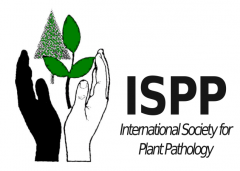INVOLVEMENT OF OLPIDIUM BORNOVANUS AND O VIRULENTUS IN THE OCCURRENCE OF MELON ROOT ROT AND VINE DECLINE CAUSED BY MONOSPORASCUS CANNONBALLUS IN CENTRAL ITALY
M.P. Aleandri, D. Martignoni, R. Reda, A. Alfaro-Fernández, M.I. Font, J. Armengol, G. Chilosi
doi: 10.4454/jpp.v99i1.3787
Abstract:
Monosporascus root rot and vine decline (MRRVD), caused by Monosporascus cannonballus, has become one of the most important diseases of melon worldwide. Recent evidences suggest that M. cannonballus is not the sole cause of MRRVD, but other pathogens, Olpidium spp. and Melon necrotic spot virus (MNSV) are also involved. The aim of this study was to ascertain the potential concomitant involvement of these pathogens in the development MRRVD of melon in Central Italy analyzing a soil sampled from a greenhouse with a known history of this disease. O. bornovanus and O. virulentus along with M. cannonballus were identified from the sampled soil. Bait melon plants grown in the contaminated soil were colonized by both Olpidium species and by M. cannonballus, showing roots browning and foliage wilt. No infection by MNSV was detected in bait plants. In the tripartite pathogenicity test, O. bornovanus alone was found to be a virulent pathogen, capable of colonizing roots with a high percentage of colonization intensity, resulting in root browning and foliage wilting. Both disease severity and intensity of Olpidium colonization determined by the co-inoculation of ascospores of M. cannonballus and Olpidium spp. were statistically similar to that resulted by Olpidium or by ascospores separately inoculated. Root symptoms were accompanied by a gradual vine decline and foliage wilting. Root rot and vine decline, which was previously attributed in Central Italy primarily to M. cannonballus, needs to be reattributed, since O. bornovanus and O. virulentus are also involved without apparent synergistic effect among the pathogens.




